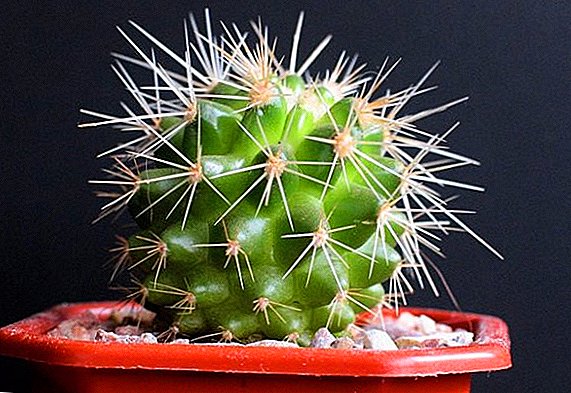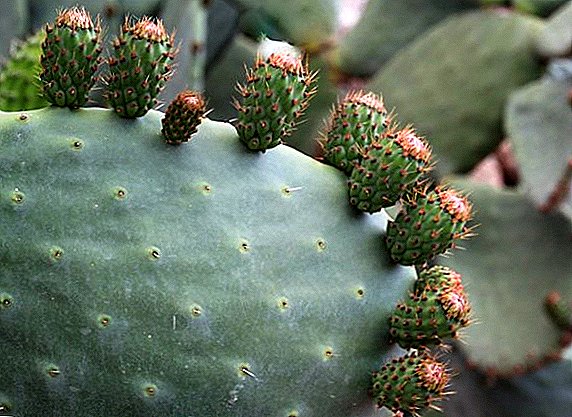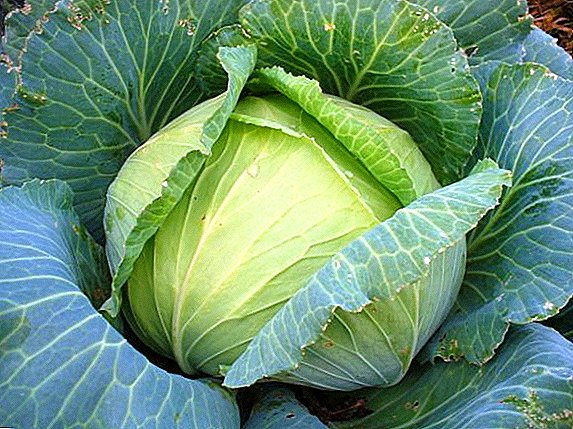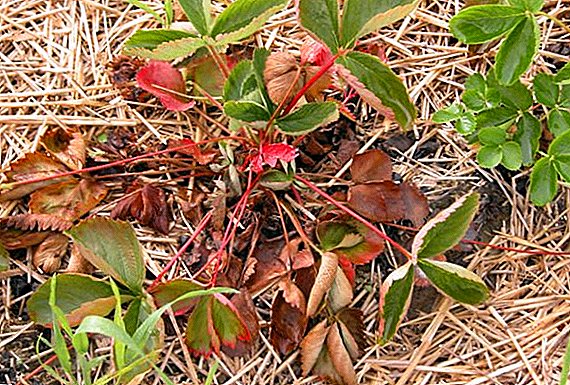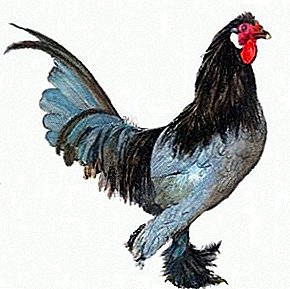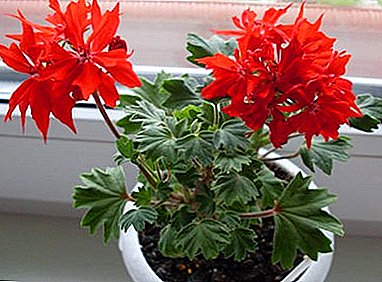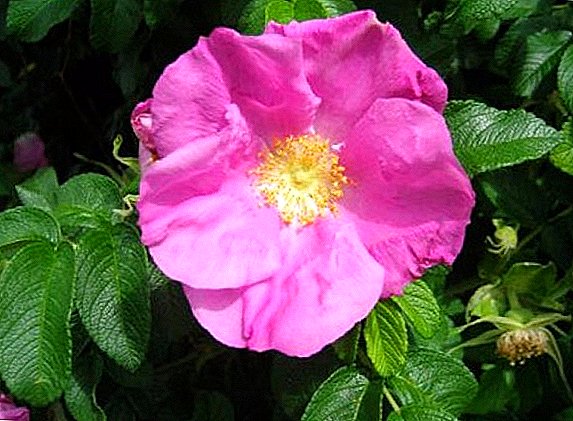 Many, especially inexperienced gardeners complain that after a year or two, an ornamental rose bush turns into a wild rosehip. This situation can be avoided if you know the differences of roses and wild rose.
Many, especially inexperienced gardeners complain that after a year or two, an ornamental rose bush turns into a wild rosehip. This situation can be avoided if you know the differences of roses and wild rose.
During flowering
In fact, the Rose and is a wild rose, only domesticated. To distinguish them from each other is quite simple. There are, of course, exceptions, but for novice gardeners, they are more likely to be informative. During the flowering period it is very easy to distinguish an ornamental plant from a wild plant.
The first in a flower, as a rule, has a lot of petals, and the second has only five of them. Also, looking at a rose, one rarely sees its middle. There are varieties where it is open specifically, but they still have a lot of petals. In the dog rose the yellow center is always in sight. The flowers of the rose bush a huge number of shades of colors - from white to almost black. A dog rose flowers are only white, pink or bright pink. But there are examples of the opposite. 
 For example, a decorative variety "Mermaid" has only five petals, like a wild plant, and a wrinkled rosehip in a flower has up to 182 petals, like a rose. These cases, like the varieties that are mentioned, are rare.
For example, a decorative variety "Mermaid" has only five petals, like a wild plant, and a wrinkled rosehip in a flower has up to 182 petals, like a rose. These cases, like the varieties that are mentioned, are rare.
And such differences are known only to experienced gardeners. To distinguish a wild-growing plant from a noble one, it is enough to look at the differences in the complex.
Did you know? The fossils and fossil remains of roses found suggest that this plant appeared on the earth more than fifty million years ago.
Shoots
The queen of flowers from wild rose is very easy to distinguish by shoots. In a noble plant, they are red-burgundy in color, which may later turn green. And in the wild representative of the family at a young and mature age, they are always green. Experienced lovers of the queen of flowers say that some scrubs and climbing representatives of the pink species also have green shoots. Then you need to look at the flower and the leaf.  Rose from rosehip can be distinguished both by shoots and by leaves. The leaves of both members of the Rosaceae family are different, as are their different numbers on a complex leaf. A dog rose has seven leaves on a branch.
Rose from rosehip can be distinguished both by shoots and by leaves. The leaves of both members of the Rosaceae family are different, as are their different numbers on a complex leaf. A dog rose has seven leaves on a branch. 
The family of pink also includes: horizontal and multicolored cotoneaster, spirea, three-lobed almonds, kerriya, felt cherries, fieldfare and Volzhanka.
A rose should have a standard of three to five. But there are exceptions to the rule. In new varieties of ornamental culture, the number of sheets more than five indicates their good winter resistance, therefore there may be varieties that have seven or more leaves in a complex sheet. Also, more than five leaves occur in climbing varieties.
Therefore, further, to understand, you need to see what kind of leaves a rose has. In size they are larger and in color rich green, dark, sometimes even with a burgundy shade, as if glossy. And in the wild representative of the species they are small, sometimes with small thorns, in color - bright green and more dull than glossy.  Two plants also differ in thorns. In the rose bush, they are large, rare, and in the dog rose - small and frequent.
Two plants also differ in thorns. In the rose bush, they are large, rare, and in the dog rose - small and frequent.
Did you know? Why do roses have thorns? According to legend, Cupid sniffed a rose and it was stung by a bee. He shot her, but the arrow hit the pink stalk and turned out to be a thorn. In fact, thorns serve as plant protection.
Proper rose hips trimming (how not to turn a rose into a wild rose)
The differences are clear, but why do roses turn into wild rose, how to avoid it, and what to do? To answer these questions, let’s see how a decorative representative of the species gets into our garden. The plant may be with its root system, and may be grafted on the so-called "stock". The latter case is more common, because with such an inoculation, the rose bushes are more resistant to soils, pests, and changes in climatic conditions. And all because the stock serves as a wild representative of the species. That is, very often the pink sapling has a root and basal part from a dog rose and only an upper shoot from a decorative rose. If we take a closer look at the sapling, then at the bottom it has a thickening, from which shoots depart. In the place of thickening, the cuttings of the cultural species are grafted onto the wild-growing plant. A rose with its root system does not have this.  If suddenly you notice that shoots that have a bright green color grow from the root of a rose bush, you need to get rid of them. These are the shoots of the wild parent, which, as a rule, are below vaccination. They need not just cut off at ground level, and removed from the root system. To do this, carefully dig the ground around the plant and remove everything that is below the grafting site. As a rule, this will be the height of wild rose. All that is above the vaccine, no need to touch. These are new shoots of roses.
If suddenly you notice that shoots that have a bright green color grow from the root of a rose bush, you need to get rid of them. These are the shoots of the wild parent, which, as a rule, are below vaccination. They need not just cut off at ground level, and removed from the root system. To do this, carefully dig the ground around the plant and remove everything that is below the grafting site. As a rule, this will be the height of wild rose. All that is above the vaccine, no need to touch. These are new shoots of roses.
There are cases when you can see wild shoots a meter away from a rose bush. They also need to be removed. They take power from the main plant, it grows worse and blooms.
Important! Rosehip shoots need to be removed more than once, and follow this constantly, until the frost. This is because dogrose is very strong, steady and growing constantly.
Rose turned into wild rose: what to do
The rose completely turns into a wild-growing parent if the graft has died. This is the part of the plant that is above the graft. In this case, shoots begin to actively grow from the hips. This is characteristic of especially young plants that do not tolerate the winter. If this happens, you can transplant a bush outside the site.
You will be interested to learn about such ornamental shrubs as: yew, skumapia, decorative honeysuckle, juniper, weigela, snowberry, magnolia and heather.
There are cases when the decorative part has not completely died, i.e. there are still its branches in the bush. You can try to save the plant. All rosehip shoots are pruned, and annuals are used as a stock for the rose. On their bark you need to make an incision, place the bud from the rose and roll it. After a couple of weeks, the bud will take root, and next year a noble escape will grow from it. Usually such a procedure is done at the end of the summer and it makes it possible to save an ornamental plant.
Important! You do not need very much loosen the soil at the roots of a rose bush. This can be a stimulus not only for the growth of the rootstock shoots, but also leads to the fact that the inactive, buds of a wild plant will "wake up".
Experienced gardeners say that in most cases an ornamental plant is reborn into a wild one because of inept care. If you follow all the recommendations described above, this can be avoided. With proper care, beautiful decorative rose bushes will not upset you, but will delight you with beauty and fragrance for a long time. 





